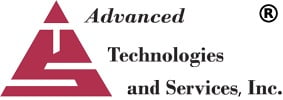With the recent push for government broadband spending, the number of competing providers in previously uncontested areas is on the rise. Every small to mid-sized provider is aware of this, but many still don’t have a way to proactively prevent churn and retain customers.
Data analytics used to be a buzzword that many thought was only in reach of the big players in telecom. As new approaches to data in broadband become more available, CSPs are taking the necessary steps to turn their data into meaningful analytics, while others are playing catch up to not fall behind.
In this blog, we’ll go over the ways we’ve been leveraging data with our Event Storage and Analytics Platform (ESAP) modules to help providers with churn and marketing support, and detect fraud using analytics.
Churn Mitigation and Sales Strategies.
Keeping customers happy and preventing churn is one of the most important aspects of a successful communications business. Once a customer decides they're going to ditch their current provider for a new one, the odds of them going back to their old provider is unlikely.
Communications providers have access to a wealth of data. Most of the data being collected includes demographics, usage, and even visitation habits across the web. It does not always identify who is looking at something in specific terms, but through analytics, customers' habits can be an early warning system for their likelihood to churn.
Data in the form of CDRs, IPDRs, SMS, are goldmines for information that can be translated into churn prediction, marketing support, and other predictive analytics to help companies streamline operations and plan for the future.
Some of the parts of our methodology include;
- Churn Behavioral Monitoring
- Marketing Support
- Customer Risk Flagging
ESAP has been able to reliably identify customers that have a higher likelihood to churn using these methods which gives providers the ability to aggressively engage them to improve retention.
An example of how we can leverage usage data is by identifying customers that aren’t on the correct plan package for the amount of data they’re using, which you can read more about here.
For example, we’ve been able to uncover ‘data hogs’ that are constantly going over their limits each billing period. On the other end of the spectrum, there are also customers who are on expensive data intensive plans that are only using a fraction of what they’re paying for. At first glance this might seem good for the provider. However, we’ve found that those most likely to churn are usually in either of these two groups.
By ensuring customers are on the correct plan, carriers have been able to decrease churn rates and enhance their overall customer experience, one customer at a time.
Providers can even use customer data to figure out potential customers’ geographic location, and then target these potential customers directly with advertisements. Data can figure out the effectiveness of their marketing and work out whether it has been cost effective or if it isn’t as profitable as it was predicted.
Fraud Detection
Aside from marketing, customer usage data and billing records can also easily detect fraud by spotlighting anomalies in usage patterns. These findings can also help uncover issues with your network and help you fix problems before they impact your customer experience.
For example, anomalies in unanswered calls could indicate data fraud, switch translation errors, or new customers introducing high volumes of calls that may impact operations.
Other reports that have proven helpful to communication providers to detect fraud include;
- Unusual Customer Usage by CIC Code
- Usage on Originating NPA That Could Cause an 'Out of Balance' Condition on a Switch
- Usage by Service Type to Look for Spikes in Usage by ICX, Local or Intrastate Calls.
These indicators may highlight everything from current/pending operational issues, significant changes in customer usage, to fraud.
Conclusion
Usage data can uncover a wealth of information that can give providers the edge in customer satisfaction and streamline network operations.
With that said, in-house analytics aren’t always possible for smaller providers, where it might be easier and cheaper to outsource their analytics to a vendor with the experience to utilize their data to answer important consumer questions.
ATS’ ESAP modules can deliver everything mentioned in this blog, and more that we’ll cover in future articles. Our experts provide hands-on techniques and problem solving ability to create custom solutions that can benefit every individual provider.
If you’re interested in learning more about our analytics suite, get in touch with us today.
